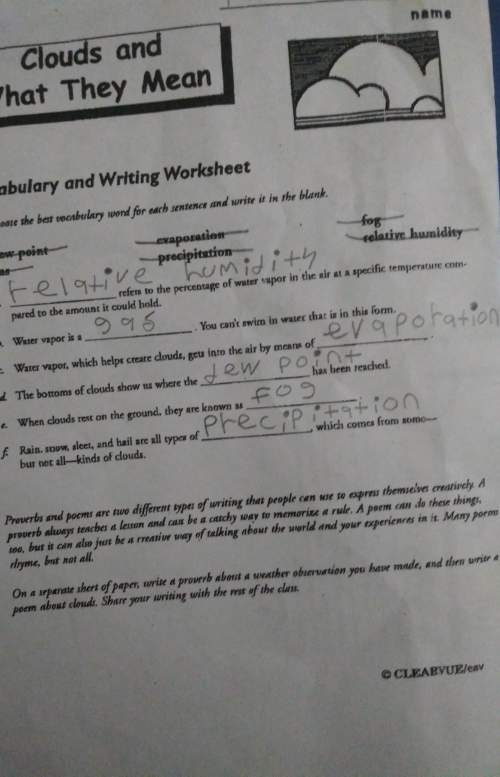
Physics, 12.10.2020 02:01 GreenHerbz206
The descriptions below explain two ways that water is used by plants on a sunny day. I. In a process called transpiration, some liquid water in leaves changes to water vapor. The water vapor is released into the air through tiny pores in the leaves. This allows more liquid water from the soil to be pulled up the roots and stem to replace water lost from the leaves. II. Plants use some of this water in leaves in a process called photosynthesis. During photosynthesis, water and carbon dioxide break apart and recombine to form two new substances, oxygen and glucose. Based on the above description of transpiration and photosynthesis, which type of change happens to water during each process? In transpiration, because some of its properties change, water undergoes a physical change but keeps its identity. In photosynthesis, because its identity changes, water undergoes a chemical change. In transpiration, because some of its properties change, water undergoes a chemical change but keeps its identity. In photosynthesis, because its identity changes, water undergoes a physical change. In transpiration, because its physical properties change, water undergoes a physical change and loses its identity. In photosynthesis, because it keeps its identity, water undergoes a chemical change. In transpiration, because its chemical properties change, water undergoes a chemical change and loses its identity. In photosynthesis, because it keeps its identity, water undergoes a physical change.

Answers: 3


Another question on Physics

Physics, 22.06.2019 08:00
A0.580-kg rock is tied to the end of a string and is swung in a circle with a radius of 0.500 meters. the velocity of the rock is 4.50 m/s. what is the centripetal force acting on the rock? 15.5 n 5.22 n 69.8 n 23.5 n
Answers: 2

Physics, 22.06.2019 10:00
The frequencies refer to the sample data collected from a population of interest when performing a hypothesis test comparing two or more population proportions.
Answers: 2

Physics, 22.06.2019 19:30
Visualize the problem and identify special cases first examine the problem by drawing a picture and visualizing the motion. apply newton's 2nd law, ∑f⃗ =ma⃗ , to each body in your mind. don't worry about which quantities are given. think about the forces on each body: how are these consistent with the direction of the acceleration for that body? can you think of any special cases that you can solve quickly now and use to test your understanding later? one special case in this problem is if m2=0, in which case block 1 would simply fall freely under the acceleration of gravity: a⃗ 1=−gj^.
Answers: 1

Physics, 23.06.2019 02:30
Aprotein molecule in an electrophoresis gel has a negative charge.the exact charge depends on the ph of the solution, but 30 excesselectrons is typical. what is the magnitude of the electric forceon a protein with this charge in a 1500 n/c electric field?
Answers: 3
You know the right answer?
The descriptions below explain two ways that water is used by plants on a sunny day. I. In a process...
Questions

Biology, 02.03.2020 21:07

English, 02.03.2020 21:07

















English, 02.03.2020 21:08




